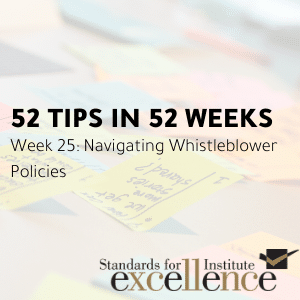

Buying supplies, equipment, and mission-critical resources have always been an art as well as a science for many nonprofits. Nonprofit leaders strive to be the best stewards of their resources and work diligently to get the most for their money while having just the right amount of inventory on hand at all times.
In these times, when we’re all in the midst of the pandemic, the purchasing needs have likely changed dramatically for a lot of nonprofits. For nonprofits providing around the clock care and services to individuals in need, their purchasing needs have likely increased dramatically. Items that were not on the “regular” procurement lists, such as hard to find personal protective equipment (“PPE”) of all types, are suddenly on the purchasing list. And, not only do we need to find ways to pay for the items, but we need to find suppliers willing and available to help us obtain these crucial items. These nonprofits have been working hard to make the connections and do the research to buy the items needed to keep their staff and the people they serve safe and healthy.
For some nonprofits like ours, we have been working in a remote environment for more than two months and now face a future reality where we will eventually be moving back to our office environment in a way that promises to be “anything but normal.” Like nonprofits around the world, my colleagues have been working to source personal protective equipment, cleaning supplies, hand sanitizer, and equipment for health screenings. Some of these items will be straightforward and simple to procure. Other items will be trickier to obtain.
As I sat on my computer a few nights ago, I was genuinely tempted to buy hundreds and hundreds of one particular product needed in these times. I had to intentionally check myself and asked, what’s the purchasing policy at our organization? How does our process for making purchases inform how decisions should be made about what to purchase and how to determine the best vendor to select? I know that a good purchasing policy serves as a tool for maximizing available resources of funds, personnel and time and generally cover topics like:
- Researching sources
- Selecting vendors (addressing when competitive bidding should be employed)
- Negotiating prices
- Using consultants
- Documenting the selection process
- Separating responsibilities for the various steps in purchasing
- Using staff time efficiently
- Considering community or environmental conditions (such as buying local or buying from sources that are reflective of our mission)
These are trying times and nonprofits are making heroic efforts to secure the items they need to have on hand immediately to keep their staff, volunteers, and the people they serve safe and healthy, and strong purchasing policies can provide some important insight for our organizations.
For more information on purchasing policies for nonprofits, we encourage you to check out the Standards for Excellence educational resource packet Financial Policies and Internal Controls which includes helpful resources and discussion around purchasing and also provides a model purchasing policy.
This educational resource packet and the full series of all packets – including sample policies, tools, and model procedures to help nonprofits achieve best practices in their governance and management – can be accessed by contacting a Licensed Standards for Excellence replication partner, one of the over 150 Standards for Excellence Licensed Consultants, or by becoming a member of the Standards for Excellence Institute.
We share our sincere wishes for your continued good health and patience as we all navigate these challenging and uncertain times.



